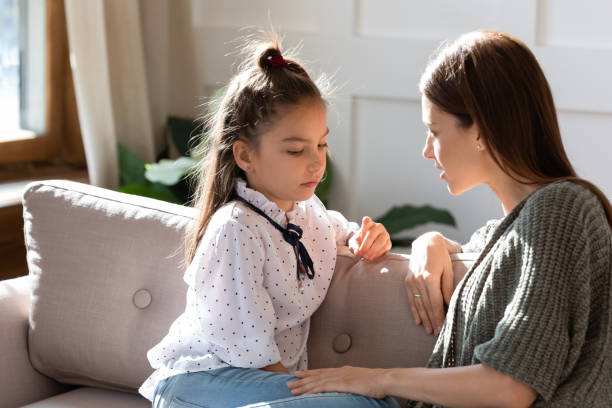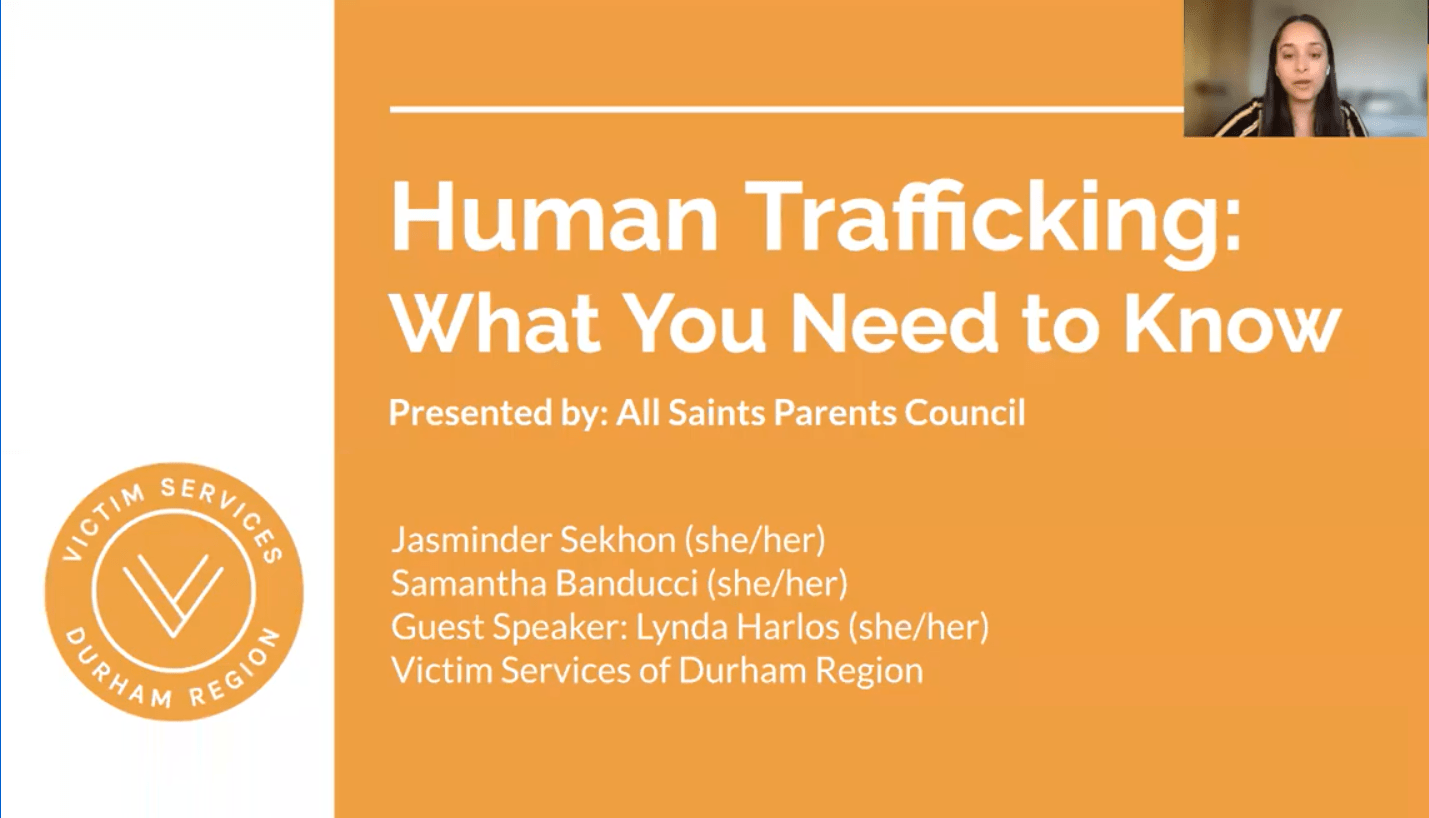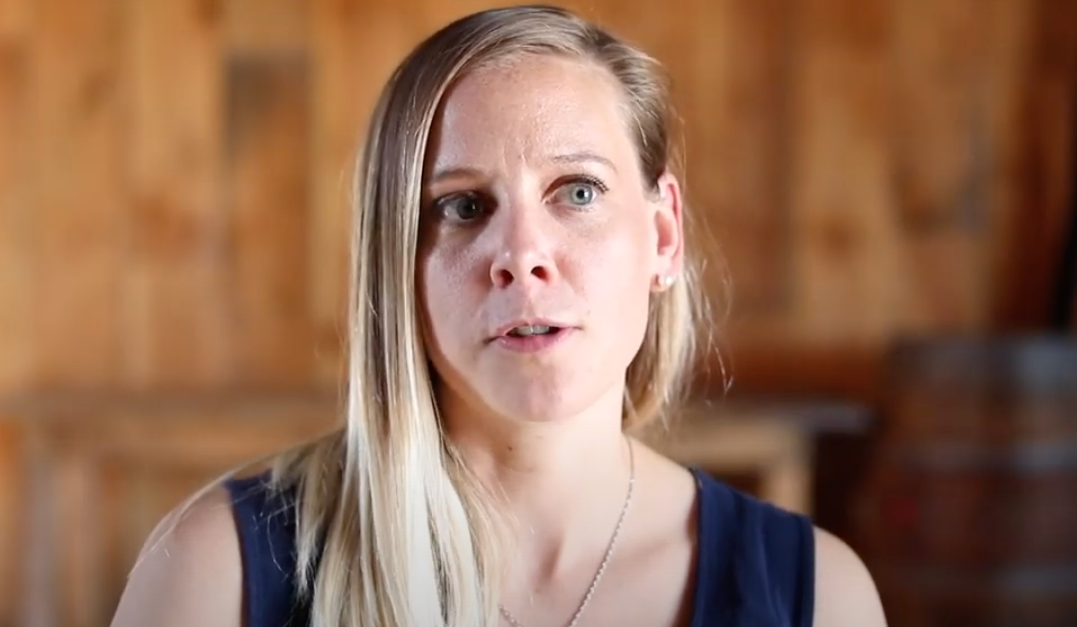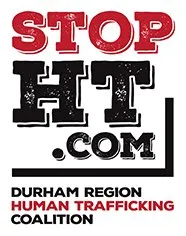Human trafficking is a human rights violation and a form of gender-based violence.
It’s not the victim’s fault. They did nothing wrong.
What is Human Trafficking?
Human trafficking is often under-reported and misunderstood. It thrives when there’s an unequal balance of power.
Human Trafficking is...
Human trafficking is the recruitment, transportation, harbouring or controlling of persons for the purpose of forced labour, including work in the sex trade.
It involves abuse, coercion and manipulation, and it’s internationally recognized as a form of slavery.
Human trafficking can include:
- Psychological manipulation, emotional abuse, lies, threats, violence and isolation
- Holding and controlling someone’s money and/or ID
- forcing, coercing, pressuring someone to have sex for money
Human Trafficking is NOT...
Human trafficking is not the same as kidnapping or cross-border smuggling.
Despite the widespread myth, human trafficking does not need to involve the movement of a person across a border or in a shipping container. In fact, most people who are trafficked in Durham Region are from Durham Region.
Human Trafficking Can Take Many Forms
At StopHT, our focus is domestic sex trafficking, which is human trafficking that involves sexual exploitation.
But human trafficking can take many other forms such as domestic labour trafficking, organ trafficking, forced crime, forced child marriage, and more.
Learn the Facts
13
YEARS OLD
The average age of recruitment into sex trafficking is 13 years old.
25
AND UNDER
Over 70% of human trafficking victims identified by police are under the age of 25.
2 out of 3
VIOLATIONS ARE IN ONTARIO
About two-thirds of police-reported human trafficking violations in Canada occur in Ontario.
92%
KNEW THEIR TRAFFICKER
92% of sex trafficked individuals knew their trafficker beforehand.
97%
ARE FEMALE
97% of victims of human trafficking were women and girls, although boys can also be trafficked.
90%
OCCUR IN MAJOR CITIES
while 90% of police reported incidents occur in major cities, human trafficking can occur anywhere.
Who is at risk?
Sex trafficking can happen to anyone, but certain communities are more at risk of being exploited and have been historically targeted. Those include:
- Women and girls
- Two-spirit, trans or queer-identifying individuals
- Racialized individuals
- New immigrants or relocated individuals
- Individuals living with lower socioeconomic opportunities
- Indigenous women and girls
- Individuals with addiction, mental illness or developmental disability
Indigenous Women & Girls Face the Highest Risk
Indigenous women & girls make up 4% of Canada’s population, yet 51% of human trafficking survivors. Learn more.
How Does Sex Trafficking Happen?
Sex trafficking can happen slowly, making it hard to detect.
Step 1: Luring
Often, the trafficker will:
- Assess the individual, test their vulnerabilities and boundaries
- Find out if the person is open to dating
- Collect as much information as possible about the person
- Make the person feel special
Step 2: Grooming & Gaming
Next, the trafficker will commonly:
- Make sure the person feels loved
- Make promises of family, home and other enticing things
- Lavish them with gifts
- May introduce drugs under the guise of “loosening them up”
Step 3: Coercion & Manipulation
Then, the trafficker may:
- Start to create confusion and a sense of insecurity in the individual by manipulating their emotions
- Become angry and decrease communication with the person
- Manipulate the person into trying to please them
- Start pushing boundaries around autonomy and sex to desensitize the person
- Offer rewards for sexual acts and obedience
Step 4: Exploitation
By now, the trafficker will have:
- Broken down the person’s self-esteem
- Threatened their safety and the safety of their loved ones
- Made the individual feel financially indebted to them
- Made the person believe they need the trafficker financially
- Started forcing the individual to work
- Isolated the individual
Step 5: Recruitment
Finally, the trafficker commonly:
- Pays compliments on performance
- Will convince the person to help teach others
- Will make the person feel powerful and important
- Allow the person a reprieve from “clients,” giving them a false sense of power and control
- Will instruct the individual to befriend other vulnerable individuals
- Will continually reinforce the possibility of a better life with them
So, Why Don’t People Just Leave?
It’s not as easy as “just leaving”. Survivors of sex trafficking face many barriers, which make it difficult to get help. These barriers can include:
- Believing it’s their fault or even their choice
- Believing they will get arrested if they talk about it
- Being manipulated to provide rehearsed answers if encountered by authority figures
- Believing no one cares about them
- Feeling shame, hopelessness or undeserving of support
- Not viewing themselves as “victims”
- Feeling afraid to leave
- Having ‘trauma bond’ with the trafficker, where they feel connected despite the abuse
Human Trafficking is Happening in Durham Region
If you’re concerned about yourself or someone you know, help is available.
I Need Help »Additional Resources

Parents & Prevention: About Human Trafficking (Pamphlet)
A guide for parents on how to talk to kids about tough topics.

Human Trafficking: What you need to know
What human trafficking is, how it happens and how to respond.

Karly’s Story: Human Trafficking Survivor (Video)
Karly Church shares her experience as a human trafficking survivor.
